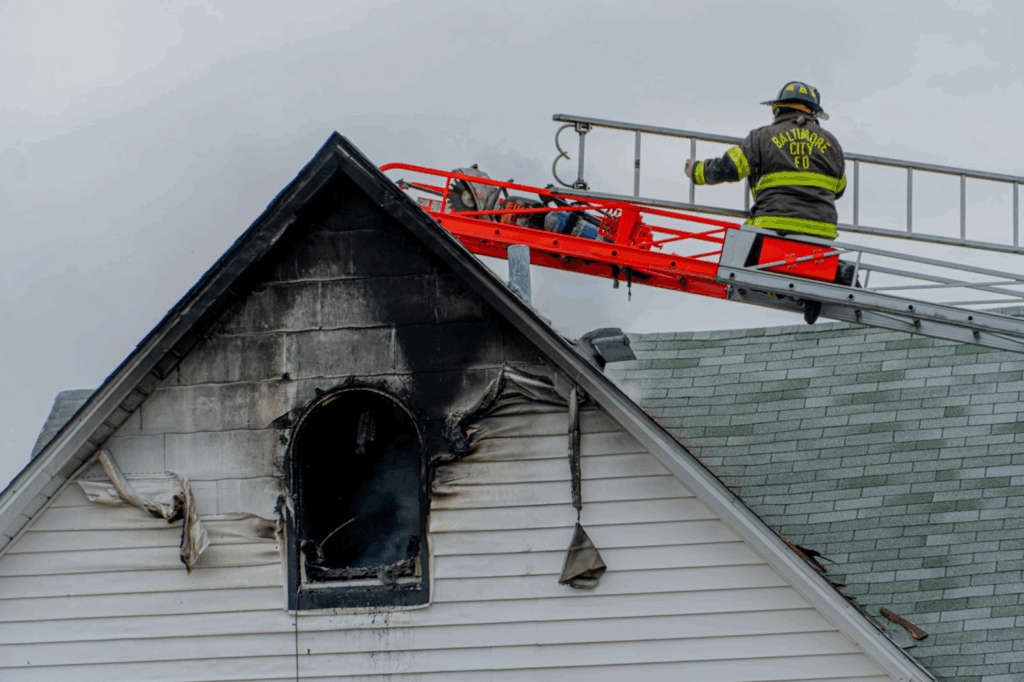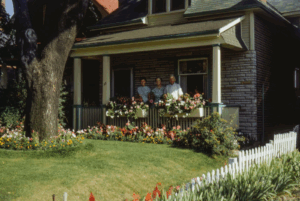
HO6 Insurance vs HO3: Why Most People Choose the Wrong Coverage and Pay for It Later
There are some things in life that you have to protect to the maximum. Your family, your peace of mind, and your health. But what else? Your home, of course.
Let’s be honest – insurance isn’t the most exciting thing to think about. But when it comes to protecting your home, it’s something you can’t afford to get wrong. After all, this is your sanctuary, a place to retreat to and hide from the world when you want to. It deserves the highest level of protection.
We get it, insurance is a complicated topic, be it life insurance or something else entirely. But it’s not up there with brain surgery or something equally as mind-boggling. Once you understand the basics, it becomes a lot clearer, and at Magnum Insurance, we’re on hand to walk you through everything.
The first thing to know is that there are also several types of homeowner policies. Choosing the best one is the difference between excellent coverage and peace of mind versus potentially dangerous coverage gaps that leave you vulnerable.
So, what’s the answer?
It’s really simple: It comes down to understanding the difference between the two main types of homeowner insurance policies – HO6 insurance vs HO3. Once you know the differences between them and what they cover, it’ll be easier for you to choose the ideal one. It’ll also mean that you won’t accidentally overpay for coverage that you might not need. Nobody has money to throw away these days, after all.
That’s why having a knowledgeable insurance partner makes all the difference. At Magnum Insurance, we make sure you understand your options. So, let’s dive in!
Table of Contents
- TL;DR
- What You Actually Own vs. What You Think You Own
- Named Perils vs Open Perils – What’s the Deal?
- Let’s Talk Risk Assessments
- Matching Your Coverage to Your Lifestyle
- The Hidden Cost Structure
- Final Thoughts
TL;DR
- HO6 policies cover condo interiors, while master policies handle structure, creating coverage gaps most owners don’t realize exist.
- HO3 policies use something called “open perils” coverage where insurers must prove why they won’t pay. HO6 often requires you to prove your loss qualifies for payout.
- Condo owners face special assessments and shared deductibles that can cost thousands beyond insurance premiums.
- Single-family homeowners get complete control over their coverage decisions and claim settlements.
- Your lifestyle preferences for control vs. convenience should drive your choice between property types and your required coverage.
What You Actually Own vs. What You Think You Own
You walk into your new condo and think, “This is all mine.” But in reality? What you think you own might not line up with what you legally own. And that’s where problems start.
Understanding these boundaries isn’t only about reading your policy documents carefully; it’s about understanding how legal ownership is different from practical responsibility. Once you know what you actually own, you can take steps to protect it. It also means you can figure out what happens to the part you don’t own.
The Ownership Reality Check
Your insurance coverage depends on what you actually own, that’s the legal and physical boundaries of your property. It might sound like the easiest thing in the world – you own it all, right? Well, you might not, and it’s so important to have the right information, especially from an insurance point of view. Why? Because insurance companies use this information to decide on the best coverage for your needs. So, if they get the wrong information, you end up with coverage gaps that you definitely don’t need.
Check out the table below to give you a clear view of the different types of properties and what you do and don’t own within them.
| Property Type | What You Own | What You Don’t Own | Insurance Responsibility |
| Single-Family Home (HO3) | Everything from foundation to roof, all systems, land | Nothing (complete ownership) | 100% individual coverage required |
| Condo Unit (HO6) | Interior from walls-in, fixtures, improvements | Building structure, common areas, shared systems | Split between individual HO6 and master policy |
| Townhome | Varies by development | Varies by HOA structure | Depends on HOA master policy coverage |
The “Walls-In” vs “Studs-Out” Coverage Gap
Okay, let’s talk about specific policies. HO6 insurance policies are for condos and generally cover your unit from the paint inward. You’ll often hear this called “walls-in.” Everything else, such as the structural stuff, is covered by your condo association’s master policy – often called “studs-out.” You don’t need your own coverage for this part.
But there’s a problem with this approach.
There’s a coverage gap for the space between the finished surfaces and the structures. So, if you experience damage to that particular area, you won’t be covered.
The Improvement and Betterment Protection Problem
Unfortunately , there can be complications. Any improvements or upgrades you’ve made to your unit also need a different insurance approach. These might be covered by the master policy because they go beyond building standards. Also, your HO6 policy might not cover them if they’re considered to be part of the building structure.
Hello to another coverage limbo that needs a specialized insurance upgrade.
Common Area Liability Reality
Condos have common areas that all people within the building can use. That’s one of the interesting things about this type of property, and you might think that you don’t have to think about any problems in these areas. If something goes wrong, it’s not on you, right? Well, maybe, maybe not.
Strictly speaking, most issues are covered by the owner’s master policy – but it’s never a good idea to just assume. If it’s a problem you’ve caused, you might be liable, and most HO6 policies don’t cover you for any incidents you cause in shared spaces. The answer? Specialized cover, but also, just be careful!
The Structural Responsibility Divide

Source: unsplash.com
When we’re looking at types of homeowners insurance, it basically comes down to main types: HO6 and HO3 insurance. The biggest difference between the two is in the structural responsibility.
Let’s break it down.
HO-3 assumes that you look after everything from the ground to the top of the roof. You own that place, it’s yours, whatever happens to it is your responsibility. Simple, right? Well, yes, but it’s a lot of responsibility, isn’t it? You have to cover any foundation problems, HVAC systems, roof damage, electric plumping, the list goes on. Regardless of all that, at least you know where your zone of responsibility lies.
The same can’t be said for HO6 policies.
These are about shared responsibility and complicate what is and isn’t covered. That’s the condo model, and those gaps we’ve just talked about.
Everything gets a bit blurry here because you might have only partial responsibility for some systems that serve several units, such as plumbing or HVAC systems. It’s a more complicated picture, and it means you need to really double down on your coverage to ensure you don’t leave any gaps where disaster might occur.
Not only that, but system failures often affect several condo units and require careful coordination between each owner’s insurance policies. It’s not hard to see why this often leads to delayed settlements, and it can be frustrating, to say the least.
Named Perils vs Open Perils – What’s the Deal?
Named perils and open perils are very important to understand. They cover how you prove what happened in the event of a claim. They affect how quickly your claim is processed, and how much you’ll get in the end – if anything. Understanding all this means you’ll have a better chance of avoiding a long, drawn out “battle” with your insurance company. Let’s be honest, nobody’s got the time or patience for that.
You might also come across HO-A insurance. This policy is used only in specific areas, mostly in Texas, and it’s a named-peril policy. That means it only covers certain types of damage, the ones that are listed as covered in the policy document. If it’s not on the list, you’re not covered.
We get it, there’s many terms being thrown at you right now, and it’s likely that some of them might be hard to comprehend, and that’s okAt Magnum, we’re happy to take that confusion away and replace it with answers that you can understand and act upon. We’re not in the business of confusing you into making choices! Instead, we’ll give you open, honest advice and we’re on hand to answer any questions – any questions at all!
The Burden of Proof Reversal
Okay, let’s start with HO-3, which usually has what’s called an “open perils” basis. What does this mean? Basically, everything is covered except for a few exceptions that are very clearly listed in your policy. Then, your insurance company has to justify why it won’t pay out your claim if it chooses not to.
Let’s back up for a moment, and imagine something happens to your roof. You lodge a claim under your insurance policy because there’s no mention of the roof in your policy. In that case, it should be covered. They have to either pay it out or tell you why they won’t. If they won’t, they’ve got to give you a very solid reason. Can you see how it’s a bit more flexible?
Yet, HO6 policies are different; these have a “named perils” approach. This is very slightly different but it has a huge impact. It basically means that the insurance company will only pay for damage caused by events very clearly mentioned in the list.
So, if your policy says it will cover damage by things like fire, lightning, or even theft, you’re good. But if floods or earthquakes aren’t mentioned in your policy, you can’t claim for any damage caused by either of those things. In that case, if you file a claim because there was a flood and your carpets are all ruined, you won’t get a penny.
The difference is that it’s a lot more restrictive and gives you less chance of a payout.
The Documentation Advantage
From all of this, you can probably see that open perils coverage is a bit easier to handle. There’s also far less need for you to prove and explain the damage. If a hailstorm caused damage to your roof, you don’t have to prove what happened. You just need to show the damage itself. Much simpler.
But, with a named perils situation, life is a little harder. Here, you don’t only have to show the actual damage, but show evidence that links it to the events covered in your policy document. Let’s say you come home from work and there’s water all over your kitchen from a burst pipe. Your walls are damaged – it’s not the best end to your day, to say the least. Not only would you have to show the water damage, but you’d also have to prove that it came from a water burst, listed in your policy as covered.
It takes a lot more time, you’ll need plenty of documentation, and you’ll have to include repair cost estimates in your claim.
Personal Property Coverage Variations
By now, you’ll see that homeowner insurance is far more complicated than, say, renter’s insurance. One area where it gets a bit more tricky is personal property protection, because it’s different between both HO6 and HO3 policies.
Replacement Cost vs Actual Cash Value
To break it down, HO3 policies usually have replacement cost coverage as standard. This means that the insurance company will pay to replace the lost or damaged item with a new one of the same kind. However, HO6 policies usually require add-ons, or endorsements, to give you the same level of protection.
The problem here is that it can affect how much you receive back when you’re replacing damaged or stolen items, especially if we’re talking about items that tend to lose value quickly.
Let’s Talk Risk Assessments
Risk is what insurance policies are all about. When you have a higher level of risk, you’ll pay more every month or annually. If your risk is lower, your premiums will also be lower. So, it makes sense to try and lower your risk level so you can save cash.
The Shared Risk Premium Calculation
Condos are a shared situation, including risk. That means you share the risk with your neighbors, and in many cases that can mean lower premiums because it doesn’t all fall on your shoulders.
Fire Risk Mitigation Through Proximity
While you’re sharing the risk load between the entire building, you’re still at the mercy of your neighbors not accidentally causing a fire or some other issue. It happens! You can’t control this, but the good news is that condo living usually offers better fire protection thanks to commercial-grade fire systems and early detection. This means that your risk is lower because, if anything were to happen, these systems would kick in and give you enough warning to take action – i.e., get out and call the fire service.

Source: pexels.com
Weather Risk Distribution
The risk of structural damage due to bad weather is also shared between all owners within the building through the master policy. So, if there is a big storm and your building is damaged, it doesn’t fall on you. However, remember that personal property weather damage is still your responsibility and that falls under your HO6 policy, not the master policy.
Let’s Touch Upon Individual Risk
Regular homeowners don’t share risk with anyone else. If this is you, then it’s all on your shoulders and your HO3 policy covers this with a deeper level of coverage. It’s not all bad news though – you’ll have far more control over how you control your level of risk, the improvements you make, and maintenance throughout the year.
The moves you make can reduce your risk profile and that has a knock on effect on your premiums. Let’s say you have a new roof fitted and a monitored security system. This doesn’t only make your house look better, but it also reduces the risk of water damage and theft. You can show that to your insurance company and they may reward you with lower premiums.
Matching Your Coverage to Your Lifestyle
You’re about to buy a new house – exciting times! At this time, it’s really easy to focus only on the building and whether it suits what you want. It’s normal in many ways – you’re not thinking about specifics at this point; but you should! Factoring insurance coverage into your choice is a good thing.
The HO6 insurance vs HO3 debate obviously comes down to the type of property you own. Yet, using this as a basis, or at least a consideration, when making a decision helps you have an easier time moving forward.
You can use the checklist below to help you out:
Coverage Decision Checklist:
- ☐ Do you prefer complete control over maintenance decisions?
- ☐ Are you comfortable with shared financial obligations?
- ☐ Do you want to handle all property improvements yourself?
- ☐ Can you budget for potentially higher insurance premiums?
- ☐ Are you prepared for special assessments?
- ☐ Do you prefer streamlined claim processes?
- ☐ Is community involvement important to you?
The Hidden Cost Structure
As with most things in life, there are hidden costs in both HO6 and HO3 policies that can affect the total cost of owning a property. These often sneak up and take you by surprise, but we’re giving you a head’s up beforehand!
In some cases, these extra home insurance costs can be more than your premiums and create huge financial obligations that you need to plan carefully. At Magnum Insurance, we’ll always give you the full picture when searching for the best coverage for your needs.
Of course, understanding the associated costs beforehand is always useful, and the table below gives some insights into that.
| Cost Category | HO6 (Condo) | HO3 (Single-Family) |
| Base Premium | $531 average | $1,411 average |
| Special Assessments | $0-$50,000+ unpredictable | $0 (none) |
| Master Policy Contribution | $200-$800 annually | $0 (none) |
| Assessment Coverage | $50-$200 additional | Not applicable |
| Deductible Control | Limited (master policy dependent) | Complete control |
| Total Annual Exposure | $781-$51,531+ | $1,411 + chosen deductible |
The Special Assessment Exposure Model
If you’re a condo owner with a HO6 policy, there’s something else to think about – special assessments. These can take you by surprise and be far more costly than your actual insurance premiums.
It’s not all bad news – you can add extra insurance on top. This will cover you for whenever an assessment is suddenly needed for building repairs or emergency situations.
When Reserve Funds Might Not be Enough
In some cases, association reserve funds may not be enough to cover major repairs needed on the property. Let’s say the roof suffers a lot of damage in a storm and the association reserve funds fall short. What happens? This is when a special assessment may end up costing huge sums, shared between condo unit owners.
In some cases, it can go far beyond the coverage limits of a standard HO6 policy. These are the hidden fees we’re talking about – they’re completely unexpected and can leave you seriously out of pocket.
Is it Possible to Have Full Cost Certainty?
It’s easy to think that if you’re a HO6 policyholder, your life is about uncertainty. Well, it’s not quite that grim, but it’s true that there isn’t as much predictability in terms of costs as with a HO3 policy.
In this case, you control all your insurance decisions because you don’t have any shared responsibility with other people in your property. It means you can budget a lot more easily for any protection and maintenance costs, and that’s a load off your mind, for sure.
Deductible Selection Autonomy
You might have heard of the term ‘deductible’ in insurance circles. So, what does it mean?
A deductible is the amount you agree you’ll pay before your insurance coverage begins and covers the rest of the claim. If you’re a single-family homeowner, you can adjust this to suit your budget. However, if you’re a condo owner, you’re probably subject to the master policy deductibles and it’s out of your control.
Final Thoughts

Source: Magnum
We’ve reached the end of our deep dive into the HO6 insurance vs HO3 discussion. How do you feel? You might be a little overwhelmed – don’t worry, it’s normal to feel that way. Property insurance of any kind is complex because it’s all about the type of property you own and several other variables that life wants to throw at you. It’s also about knowing what you’re responsible for and what you’re not. That’s how you know that you’re protected should the unexpected happen, giving you peace of mind and allowing you to manage your finances and your level of risk.
The biggest difference between these types of homeowners insurance is named perils and open perils, and we talked about this a lot. If you end up making a claim, you’ll find it much easier if you don’t have to dig too deeply into proving what caused it and how. That’s what you’ll need to do with a HO6 policy. Instead, a HO3 policy simply covers the issue if it’s on the list, cutting out the hard work and allowing you to receive settlement much faster.
If you’re still scratching your head, don’t worry; Magnum Insurance is here to make things easier. With over 40 years of experience, the insurance world is no longer confusing to us, and we’ll do everything we can to find the best policy fit for your needs. We also offer flexible payments, including installments and finance options, making the whole thing more streamlined.
So, if you’re at a loss and not sure which way to turn, reach out to us today for a quote. Our experts will talk you through the situation and get to work in finding the best policy for your situation. Let’s work together and you’ll see what you once thought was a roadblock, is actually a big opportunity.


